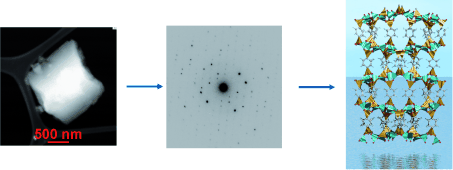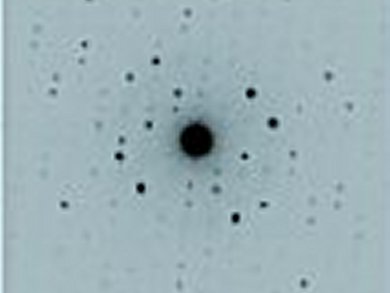The synthesis of aluminosilicate hybrids with organic groups fused within a crystalline framework is a daunting mission, but hybrids add variable chemical modification to the repertoire of zeolites, which are well established as heterogeneous catalysts, ion exchangers, and molecular sieves with many different pore architectures. A breakthrough in the synthesis of crystalline aluminosilica-based hybrid organic–inorganic porous materials occurred in 2008 with the advent of ECS (eni carbon silicates).
ECS-2, prepared with 1,4-bis(triethoxysilyl)benzene, was the first structure to be resolved. It consists of a regular stacking of aluminosilicate and organic layers, the latter made up of phenylene groups covalently bound to the Si atoms of adjacent inorganic layers. Formally, ECS-2 can be classified as clathrasil-like, since the arrangement of the phenylene rings generates large cages disconnected from the exterior.
Stefano Zanardi, eni s.p.a.—Refining & Marketing Division, San Donato Milanese, Italy, and colleagues report the structure of another ECS: They used automated diffraction tomography (ADT) to collect electron-diffraction data for solving the crystal structure of ECS-3. This is the first example of a crystalline hybrid organic–inorganic aluminosilicate with open porosity, generated by a regular arrangement of phenylene rings interconnecting aluminosilicate layers and one of the most complex structures ever solved by electron diffraction.

Regular arrangement of phenylene rings interconnecting aluminosilicate layers: Al turquoise, C gray, O red, Si gold. ©: Wiley-VCH.
- German
ECS-3: A Crystalline Hybrid Organic–Inorganic Aluminosilicate with Open Porosity,
Giuseppe Bellussi, Erica Montanari, Eleonora Di Paola, Roberto Millini, Angela Carati, Caterina Rizzo, Wallace O’Neil Parker Jr., Mauro Gemmi, Enrico Mugnaioli, Ute Kolb, Stefano Zanardi,
Angew. Chem. 2011.
DOI: 10.1002/ange.201105496 - English
ECS-3: A Crystalline Hybrid Organic–Inorganic Aluminosilicate with Open Porosity,
Giuseppe Bellussi, Erica Montanari, Eleonora Di Paola, Roberto Millini, Angela Carati, Caterina Rizzo, Wallace O’Neil Parker Jr., Mauro Gemmi, Enrico Mugnaioli, Ute Kolb, Stefano Zanardi,
Angew. Chem. Int. Ed. 2011.
DOI: 10.1002/anie.201105496



